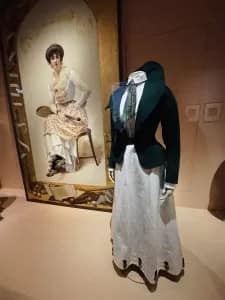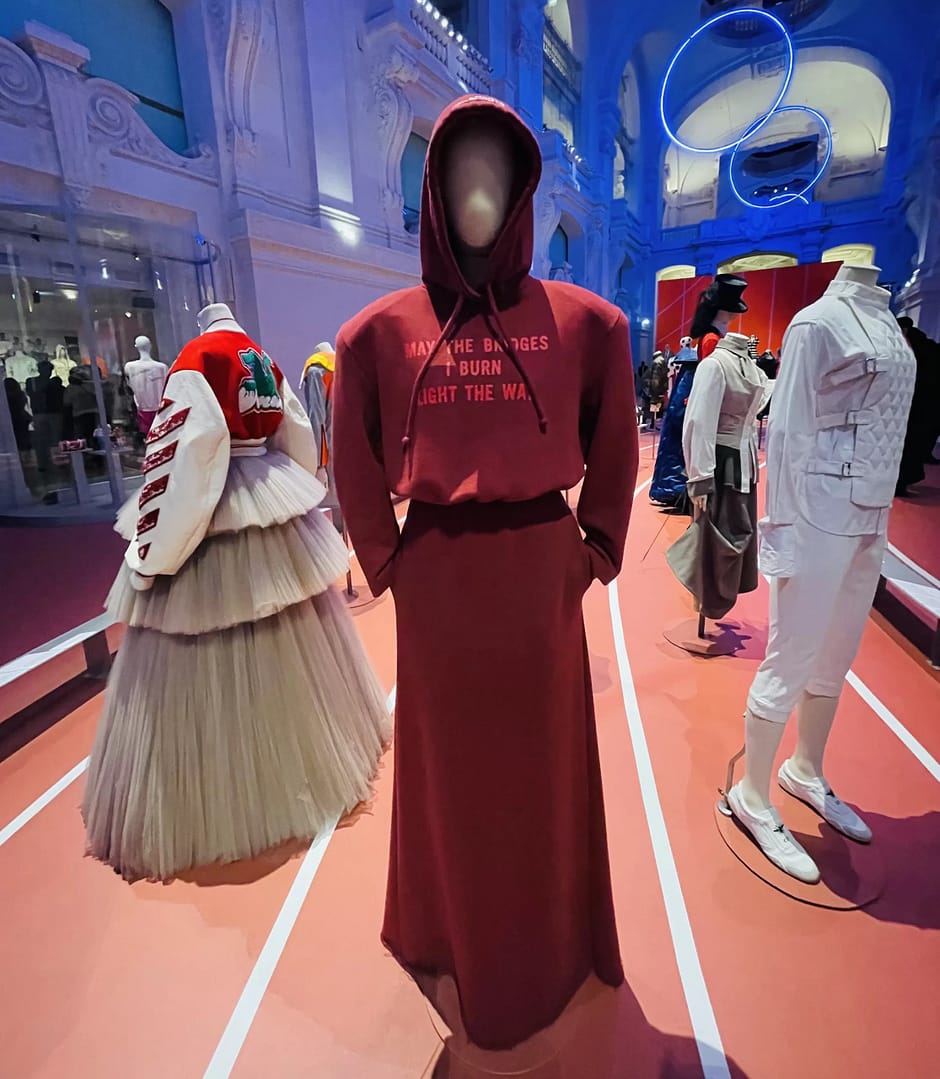Walking through the charming cobbled streets of Paris, I was captivated by the chic fashion sense of Parisian women. Their effortless style and poise can capture anyone’s attention even on dull, rainy days. Inspired by fashion history and feminism, I visited “Mode e Sport” at the Museum of Decorative Arts in Paris.
The desire for comfort in fashion history is emphasised, with sportswear constantly evolving and remaining a prominent aspect. Polos, trainers, tracksuits, baseball caps, puffer jackets, and leggings have become essential items in people’s wardrobes. The interplay between fashion and sports, from gym attire to streetwear, provides valuable insight into our present fashion choices.
Revolutionising Comfort – a historical look at women’s sportswear
In the late 19th century, clothing designed for sports emerged as competition and performance gained prominence. During the 1920s, couture houses began to dress fashion-conscious Parisian women as well as female sports champions. Over time, the designs and fabrics worn by athletes became popular in everyday outfits.
These new fashion changes had a significant impact on society, as they influenced people’s values. The increasing popularity of sports played a role in empowering women and gradually redefining the standards of modesty.






Riding to Liberty
In the US, Amelia Bloomer introduced the concept of wearing pants known as bloomers, underneath skirts. They provided practicality and improved mobility for female cyclists. French women commonly wore divided skirts that allowed them to move freely while still adhering to the dress code at the time which prohibited women from wearing trousers.


Limitations of Swimwear
In the 19th century, women’s swimwear was designed to be modest and in line with society’s standards. It usually included a dress, bloomers, and stockings made of wool or cotton. However, this type of swimwear wasn’t practical for ease of movement in the water. These clothing choices reflected and enforced the limitations placed on women in society at that time.


The Tracksuit – a wardrobe staple
In the 1980s, tracksuits and trainers became trendy among young people. Sporting brands created various styles, some of which became fashion staples. Luxury brands also began producing tracksuits, like Sonia Rykiel who made tracksuits with luxurious velvet. She was one of the pioneers who showcased models wearing soft velvet tracksuits on the runway.


Juicy Couture
The tracksuit became popular in the 1990s among rich young pop stars and their fans, thanks to the rise of hip-hop and rap. Juicy Couture introduced its first tracksuit in 2001. Britney Spears famously asked her bridesmaids to wear pink Juicy Couture tracksuits at her wedding in 2004. Although Madonna also endorsed the brand, it became most closely associated with Paris Hilton. She was frequently photographed sporting Juicy Couture tracksuits with the word “Juicy” prominently displayed on the back.

Breaking Barriers
This fascinating exhibition traces the evolution of women’s sportswear, highlighting its crucial role in empowering women. It has transformed uncomfortable and restrictive clothing into comfortable, and high-performance designs while enhancing women’s sports experiences.
Furthermore, it has increased their self-assurance to take part in sports, overcoming obstacles, advocating for equality in athletics, and adding to the larger narrative of women’s empowerment.





All images courtesy Musée des Arts Décoratifs, Paris



